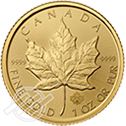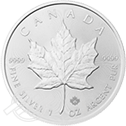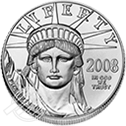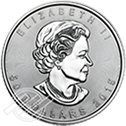What Was the Gold Standard?
Imagine walking into a bank, pulling dollars from your pocket, handing them to a teller, and the teller giving you gold in return.
Sounds wonderful but crazy, doesn’t it?
As far-fetched as it seems, there was a time—not too long ago—that this was reality. The United States and most other countries were on the gold standard. And with the gold standard, you could freely convert dollar bills to gold.
This guide will also answer the following questions:
- What is the gold standard?
- When did the U.S. leave the gold standard?
- What countries are on the gold standard?
Let’s take a look at how the gold standard worked. We will explore why it came to be, how the gold standard became problematic, and why it is no longer in use.
A Historical Look at the Gold Standard System
Countries that adopted the gold standard linked their money supply directly to gold. Gold backed the value of the paper money, and every unit of paper money was convertible to a specific amount of gold.
These countries issued gold and silver coins as normal currency.
In the U.S., the Coinage Act of 1834 established a silver-to-gold ratio of 16:1. That meant it took 16 ounces of silver to equal the value of 1 ounce of gold. While the ratio may have skewed a bit toward gold, the act established gold as the de facto standard bearer for the still fledgling United States and brought its monetary policy on par with the rest of the developed world.
By the 1870s, most developed countries had adopted what was the gold standard. Nations hoarded as much gold as possible. The gold standard eased monetary conversion between nations. Due to trade imbalances, debts between countries had to be paid in gold.
The gold standard inherently made governments more disciplined with monetary policy. It restricted money printing because every piece of paper currency had a requisite amount of gold to back it.
Keeping money supplies in check consequently kept inflation in check. When a nation went into debt, it paid with gold. Outflows of gold directly linked back to a reduction in that nation’s money supply, causing a drop in prices. Many assumed that competitiveness would grow, eventually balancing deficits.
The End of the Gold Standard
All was well from 1870 until 1914. But the start of World War I highlighted the flaws of the gold standard system.
As debts between nations grew, governments struggled to balance their finances. The gold standard’s lack of flexibility made it difficult to adjust monetary policy. Many countries ignored the principles of the standard, and it became clear that a change was necessary.
Post-war economies around the world grew rapidly, but gold supplies didn’t. The United Kingdom and the United States held the most gold. Other countries began holding bank notes from these two—instead of gold—and the U.K. and U.S. dominated the accumulation of gold reserves.
Then came the Great Depression in 1929. Stock markets crashed, testing banks’ solvency. Countries raised interest rates in hopes that higher returns would entice depositors and quell conversions of bank notes to gold. England abandoned the gold standard altogether.
By 1934, the U.S. had devalued its dollar by raising the price of gold from $20 to $35 per ounce. Struggling nations rushed to convert their gold holdings into more dollars, and the U.S. became the world’s largest gold owner.
The period between 1934 and 1971 saw many of the world’s economies grow. It also saw the U.S. economy stress from the weight of expanding social service programs and two wars—WWII and Vietnam.
The late 1950s and early 1960s found the U.S. economy running deficits. It needed flexibility that the dollar’s pegging to gold didn’t allow.
By 1971, President Richard Nixon removed the U.S. from any remnants of the gold standard in hopes of stifling inflation. By 1976, the gold standard was no more.
What Countries Are on the Gold Standard System?
No countries still operate on the gold standard.
Germany abandoned it in 1914 and didn’t have enough gold after paying war reparations to return to it. England left in 1931 during the Great Depression. France maintained it until 1936.
When Did the U.S. Leave the Gold Standard?
The United States began decoupling its currency from gold in 1933. By 1971, the U.S. was completely off the gold standard.
Key Principles of the Gold Standard System
The key features of the gold standard were:
- Convertibility
- International balance
- Inflation protection
Convertibility
Convertibility was a key aspect of the gold standard. A nation’s paper currency and coinage could readily convert to a predetermined amount of gold.
International Balance
International balance resulted because the gold standard required nations with a trade deficit to pay that deficit in gold. Countries owed a deficit had to accept gold as the payment. Gold was the centerpiece of trade and could not be diluted.
Inflation Protection
Inflation protection was an inherent characteristic of the gold standard. The gold standard prevented reckless money printing, keeping money supplies steady. Nations that saw outflows of gold had to proportionately reduce their money supply. Reductions in prices of goods and services followed.
Benefits of the Gold Standard System
Some benefits of the gold standard include:
- A reduction in trade deficits. Money that is not gold-backed can’t be printed. Governments can’t finance large deficits with new money and must be fiscally responsible.
- Trade certainty. It provides fixed rates that reduce uncertainty in international trade.
- Increased transparency. The gold standard provides transparency in the economy.
Potential Drawbacks of the Gold Standard System
Drawbacks of the gold standard include:
- Less flexibility. It limits flexibility in creating monetary policy.
- Supply constraints. It restricts money supply.
- Resource ramifications. The gold standard requires large amounts of physical gold.
The Impact of The Gold Standard on the Global Economy
For a brief but important period of time, the gold standard proved effective.
Until the dawn of WWI, the gold standard seemed to provide balance and discipline to monetary policies of central banks. Nations knew the rules, abided by them, and were in harmony. This kept inflation at bay and curbed overspending.
But modern societies experience complex problems that often need creative solutions—either in the short term or the long term. The gold standard sometimes limits those solutions.
It is highly unlikely that the world will ever return to a gold standard, but that doesn’t diminish its worth as a concept.
Investors with individual retirement accounts (IRAs) and eligible 401(k) plans can establish their own gold standard.
The precious metals IRA, also known as the Gold IRA, is a great way to add physical gold, silver, platinum, and palladium to your portfolio.
The Gold IRA rollover is a tax-free, penalty-free process. The account executives at Advantage Gold will walk you through it and show you how easy gold ownership can be.
Call us today, or click the link and we’ll call you to get you started.
At Advantage Gold, we’ve been educating clients for almost a decade, and we’re happy to help.
Tags: gold standard system, what countries are on the gold standard, what is the gold standard, when did the us leave the gold standard


